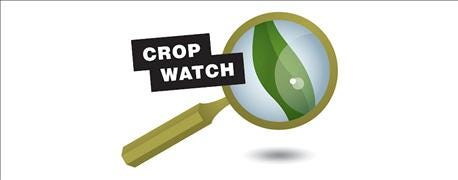
Dave Nanda laid out his tips for selecting the best corn hybrids for your farm here recently. You can find similar information in the upcoming November issue of Indiana Prairie Farmer.
Crop Watch 10/12: Will mysterious grain loss phenomenon show up in crop watch field?
Nanda is a crops consultant for Seed Consultants, Inc. This company provides seed prizes for the Crop Watch contest. Those who guessed closest to the actual yield of the Crop Watch field will receive seed prizes. Yield results aren't yet available.

Crop Watch 2015: Spreading pollination risk by planting two corn hybrids side-by-side makes sense if done correctly.
Nanda believes the farmer who farms the field was on to something when he decided to plant two hybrids across the field instead of just one. He puts one hybrid in 12 rows of his 24-row planter, and a second hybrid in the other 12 rows. That gives him strips of alternating 24 rows of two hybrids across the field.
"What it can do is help spread out pollination risk," Nanda says. "It lengthens the amount of time that pollen should be available in the field."
One hybrid started tasseling and producing ear shoots two to three days before the second one this year. A two-to-three difference can be a big deal, especially if weather conditions shift and favor one pollination time over the other. There is no way to know in advance which time will turn out to be the better window for pollination.
If you're going to do this, Nanda says you need to make sure that the two hybrids actually flower, or tassel, and pollinate a few days apart. There is no standard relative maturity system in the industry. So relaying on relative maturities may not guarantee that you have two hybrids that will actually flower and pollinate at different times.
Two-hybrid approach: One way to spread pollination out is to plant two hybrids that pollinate a few days apart in the same field, side-by-side.
Crop Watch 10/9: Many new farm products simplify harvest, make life easier
This farmer even planted seed from two companies in the same field. He worked with reps from both companies to make sure he had hybrids that would pollinate a few days apart. He also made sure that other characteristics, such as relative moisture percentage, would match up so that the two hybrid would fit well together.
About the Author(s)
You May Also Like




